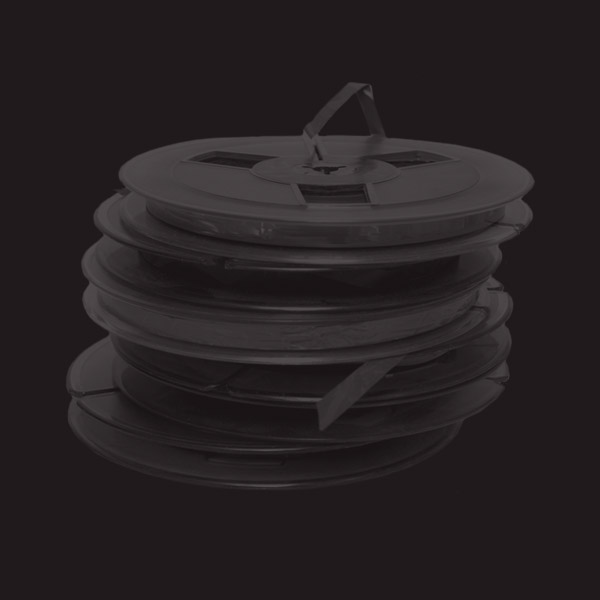
Artist Name: Elliot Madriss Title: The Samba of Love Genre: Samba Rating:
Equipment
DAW – Cakewalk by BandLab, PG Music Inc. Band-in-a-Box; Operating System – Windows 10; Audio Interface – Audient iD14; Microphone – Warm Audio WA-251; Plugins – Antares Harmony Engine; Headphones – Beyerdynamic DT 990; Monitors – Focal Alpha 80
Music
“The Samba of Love” was written and performed by Elliot Madriss, using a BandLab Cakewalk and Band-in-a-Box from PG Music. Elliot was the vocalist and also played nylon string guitar.
Review By Dave Martin
Elliot Madriss isn’t a stranger to Readers’ Tracks; his bluesy tune, “What the Funk!” was featured some time ago in Spotlight 155. With “The Samba of Love,” Elliot takes on a Latin vibe with a nylon string guitar intro—an appropriate choice. Not only did Brazilian composer Antonio Carlos Jobim play a nylon string guitar, but guitarist Charlie Byrd’s fingerstyle guitar sound was a big part of Stan Getz’s 1962 album, Jazz Samba, which brought Brazilian music to the American public.
The unique (to me) aspect of “The Samba of Love” is that all of the tracks, other than Elliot’s guitar and vocals—drums, percussion, piano, organ, strings, the rhythm guitar part, bass and even the solo flute—were generated with Band-in-a-Box from PG Music.
It has been years since I played with BIAB, but in Elliot’s hands, it sounds pretty amazing. The piano track has some rhythmic movement to it, and while I regularly use Toontrack EZdrummer and Superior Drummer, there’s a relaxed vibe to the drum track on “The Samba of Love” that somehow feels more natural than what I have heard from other programs. Elliot says, “The flute solo was also generated by Band-in-a-Box, and you really have to work the program to get real-life solos out of the instruments.”
The thing that makes “The Samba of Love” work as well as it does is Elliot’s deep knowledge of the program. He says, “This is not an easy program to use and master for real-life musical performances if you are using complex chords and arrangements—you need a lot of musical patience.”
It’s common sense if a lot of work that the better you know a program’s strengths and limitations and how to get around those limitations, the better the result will be.
Elliot’s vocals were recorded with a Warm Audio WA-251 microphone, using the preamp in an Audient iD14 interface. The harmony vocals were generated with the help of the Antares Harmony Engine.
Dave’s Suggestions
Elliot Madriss is a songwriter who lives in a part of the country without a thriving studio scene, and like all of us, he has a budget. Elliot says, “There may be a few players who could play the stuff that I write, but it would cost hundreds, if not thousands, of dollars to record and produce.” By using Band-in-a-Box, and by taking a deep dive into the software, Elliot has found a way to record his songs without breaking his budget by hiring a bunch of musicians.
After listening to “The Samba of Love” and “What the Funk,” the other track he submitted for the Readers’ Tracks column, it seems to me that Elliot Madriss has found a successful and affordable way to record his music, complete with the parts that are not in Band-in-a-Box, including vocals and guitars.
However, I would make a couple of suggestions for Elliot’s future recordings, which are applicable to most of us. The first is that when working on material in a specific genre, it might be worth spending a little time playing some of that style of music through your mix speakers/headphones before you start to mix.
The process of familiarization can help to get the right sounds for each instrument and help get the relative levels of the various instruments a bit closer to best fit the style. Besides, I find that making a practice of listening to music that’s similar to what I’m about to work on gives me a chance to listen to artists that I haven’t listened to in months or years.
The other thing that I often recommend to writers and musicians who are doing it all themselves (whether that’s playing every instrument or, in Elliot’s case, programming everything) is to remember that with the internet, great musicians are an email away— and are often surprisingly more affordable than one might think.
On a fairly regular basis, I’ll think of something that will improve my recording—an instrument that I don’t own and don’t play, like, say, an accordion or a dobro—and I’ll call someone. I send them a stereo mix, and they send back a fabulous part that works better than I could have imagined. I hire outside musicians for every project I work on, but from time to time, it’s worth the time and money to bring in that sound.
Summary
“The Samba of Love” is a good recording and a fine song, but it’s also a great example of using the resources available through technology to create high-quality music, even when musicians are unavailable or are out of the budget. As composer Elliot Madriss proves, working with a complex program like Band-in-a-Box takes time and effort to get the best results.
Dave Martin is a producer, engineer and bassist. Dave owned Nashville’s Java Jive Studio for close to 25 years. Dave has recorded, produced and/or played with symphony orchestras, rock and roll icons and country music legends ranging from the Old Crow Medicine Show, The Dead Pickers Society, Porter Wagoner, Robben Ford, Billy Cobham, The Box Tops, Carl Verheyen, Richie Faulkner (Judas Priest), Adrian Belew, Rick Nielsen (Cheap Trick), Eric Johnson, Robbie Fulks, Steve Vai, The Coasters and others. Dave is also a member of the Western Swing Hall of Fame.

